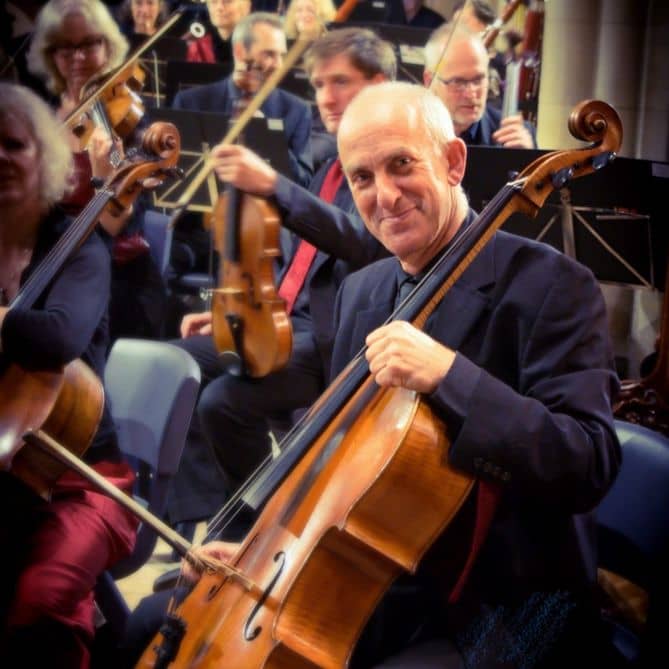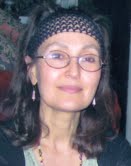
Cello Classics: An Interview with Sebastian Comberti (June, 2002)
Selma Gokcen
Interview by Selma Gokcen
SG: What led to the creation of the label Cello Classics?
SC: A number of different things all coming together at the same time. At the bottom of it all is my interest in finding repertoire that hasn’t been played before, which I imagine is common to nearly every cellist. In particular, for many years now, I have been trying to work out where the origins of the 19th century sonata actually lie. We are led to believe that the cello and piano sonata began with Beethoven, as if he suddenly decided to compose the Opus 5. There must have been other previous examples. In the course of my research, I frequently talked to Keith Harvey and discovered that he had similar interests. His own music library is vast, but needed cataloguing at the time, and it was while carrying out this task over many months that I discovered many treasures, including some Boccherini sonatas unknown elsewhere in the music world. Keith generously suggested that I should record them, which set me to thinking how best to go about it. I mentioned the idea to an old friend Nicholas Soames, who with his sister had formed a specialist label called Clarinet Classics some ten or so years ago.
SG: Is that Victoria Soames?
SC: Yes, the clarinettist and also the motivator behind Clarinet Classics. We decided to create our own label, model it exactly on the same lines, and call it Cello Classics. I talked further with Keith Harvey, who came up with some wonderful ideas for other releases, as I certainly had no intention of starting a label featuring only myself. Initially we launched with three CD’s — the Boccherini Sonatas, Leonid Gorokhov’s “Virtuoso Cello Transcriptions,” and Feuermann’s “Rare Recordings 1934 to 1942,” all of which included works never before appearing on CD.
SG: How do you go about selecting recording material?
SC: We have an artistic board which makes decisions based upon keeping a balance between commercial viability and our aim of introducing lesser-known material to the public: making sure, for example, that the label is not going too far down the historical route, or that there are not too many unknown cellists. One has to keep a balance between what’s interesting and what will actually sell.
SG: Are you aware of gaps in the recorded material for the cello and are you attempting to fill them?
SC: As I said, there is much that hasn’t been recorded — but one has to be careful as very often the gaps are there for a good reason. For instance, I receive two or three wonderfully imaginative ideas from people each week, in which probably only twenty cellists around the world would be interested!
SG: Who were your cello idols as a child?
SC: Growing up in 1960’s London it was Jacqueline Du Pré without question. I went to many of her concerts as a child. I’m sure her reputation accounts for the vast number of cellists that exist from my generation and beyond. We also frequently went to hear Tortelier, who happened to have given a few lessons to my grandfather, my own first teacher.
SG: Was Feuermann a presence in England?
SC: He was completely unknown to me until I was given an LP of him playing the Dvorak Concerto twenty years ago. When I got to hear more of him through Keith [Harvey]’s influence, it was a revelation.
SG: I think every country has a different exposure regarding favoured artists and recordings.
SC: To be honest, I was not as captivated by cellists when I was young as much as I was by chamber groups. I listened to the Melos Ensemble, for example, as well as the many great quartets around back then — Amadeus, Gabrieli, Aeolian, and Allegri.
SG: Do you think it is important for young people to familiarise themselves with the great artists of the past?
SC: Absolutely. I think it is a good reminder to us all to know that there have been phenomenal cellists throughout history. I’m just re-reading a book about Popper, and we know there were probably twenty or thirty cellists on the concert circuit at that time. Merely the fact that it took longer to travel between cities probably accounts for the large numbers all having busy careers! Some of the great cellists who were around in the 1860’s and 1870’s are actually recorded and we shall hear them on a future Cello Classics release. To hear some of the very cellists who played alongside Brahms and Dvorak will be incredible.
SG: Where are you drawing that material from?
SC: Mainly from private collections; some of the recordings are already known but we intend to analyse and discuss them more from the point of view of playing styles and technique — which I hope will be of great interest to other cellists.
SG: You have been listening to players from a century ago. What are the immediate differences you noticed?
SC: The most obvious is the difference in the vibrato which you don’t hear constantly going through every note. It really just confirms what we’ve known all along: that vibrato is simply another tool, an ornament, not to be switched off totally, nor switched on constantly.
The other obvious feature is the type of portamento, about which we know a great deal from historical treatises and from the printed sources. With my colleagues in the London Mozart Players, we have just recorded several of the cello quartets by Klengel and Fitzenhagen; much of the music has fingerings which, rather than merely serving as aids to getting around the cello, seem rather to suggest which notes are to be elided and which are to be played cleanly.
SG: Pianists talk about this in the Beethoven sonatas, where particular fingerings are related to articulation.
SC: We made sure we did all those fingerings in the cello quartet, just to get the right feel for it.
SG: Which editions did you use? Were they contemporary?
SC: Most of the Fitzenhagen quartets are newly published, but the Klengels, for example, were reprints of old Breitkopf editions.
SG: What areas of the cello repertoire do you favour?
SC: I personally love some of the lesser-known 19th century repertoire, and I am just working on a CD of late 18th and early 19th sonatas to try to plug some of these gaps.
SG: Would you give us a clue as to the composers?
SC: People like Moscheles, Wölfl, and Hummel – the latter not a sonata but variations that have only recently been published.
SG: That is a valuable edition to our repertoire, as we do not have many sets of variations from that period apart from Beethoven’s.
SC: Actually, some years ago I went to visit Nona Pyron in Orange County, California, where she had a collection of 9,000 works featuring the cello; at that time she was publishing maybe ten titles per year for Grancino Editions. A surprising number of them were rather trite sets of variations from early to mid-19th century, by lesser-known and unheard-of cellists. When you start digging around there is an awful lot of material; soloists at that time were not only playing Beethoven sonatas, but much else, including many party pieces!
SG: What are your long-term ambitions for the label?
SC: I would like to see it grow to the point whereby I don’t have to make all the decisions myself and can share many of the problems associated with running a label. I see it as something that will pool cellists together. I have been talking to Raphael Wallfisch, Steven Isserlis, and other cellists who have come up with some very exciting ideas. Eventually, when we’ve grown a bit, I hope can take more of a back seat and concentrate on the projects that I feel passionate about.
SG: It’s a unique and exceptional thing to have a label devoted to cello repertoire, as the big labels don’t have the same interests.
SC: Yes, and our advantage is that as we are so small, we can meet that niche in the market that no major label would bother with. That’s the example set by Clarinet Classics, who are very successfully meeting the demands of a small but enthusiastic group of supporters.
SG: Can you say anything about the distribution of your recording?
SC: Yes. Through Clarinet Classics we are very lucky to have access to a distribution network that covers the whole world, so the recordings should be available, as they say, “in all good stores!”
SG: How does one go about finding a recording easily?
SC: Well, apart from the retailers there’s the web site (www.celloclassics.com), which is updated every few weeks to include the latest releases. More and more people seem to find us this way and soon there will also be a facility to order by mail if customers are uncomfortable with using credit cards on the internet.
SG: What has been the public response to your recordings?
SC: Terrific. I get a load of emails every day from enthusiasts who seem to appreciate what we’re doing and who also come up with ideas for other projects. The interest has been phenomenal.
SG: Finally, can you say word about your future projects?
SC: There’s definitely going to be a Great Moments II as the first Great Moments (CC1006) has been so popular. There are the Early 19th Century Sonatas and 19th Century Cellists coming out, with a lot more obscure repertoire. Raphael Wallfisch’s recording is also coming soon (November 2002). We’re calling it The Ysaÿe Connection, with sonatas by Franck, Lekeu and Ysaÿe. It’s at the editing stage right now and I can tell you it’s going to be stunning!
06/27/2002
Subjects: Interviews
